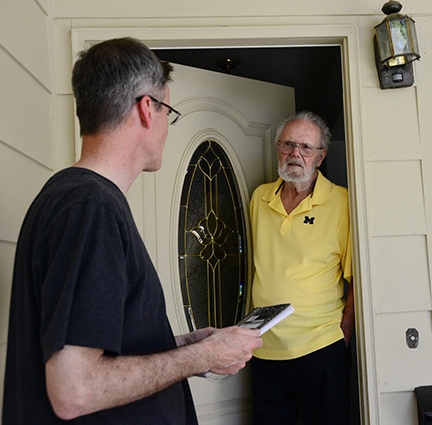
The distinguished emeritus professor of entomology at the University of California, Davis--he preferred to be known as “Robbin”--was a global and legendary authority on bees, an amazing person and an incredible scientist. He passed away today (Friday, June 7), surrounded by family at his home in Davis. He was 85.
Robbin, a member of the UC Davis entomology faculty for 30 years, from 1964-1994, achieved emeritus status in 1994 but continued to engage in research, teaching and public service until a few weeks before his death.
A tireless advocate of pollinator species protection and conservation, Robbin was known for his expertise, dedication and passion in protecting native pollinators, especially bumble bees, and for his teaching, research and public service. He was an authority on pollination ecology, ecology and systematics of honey bees, bumble bees, vernal pool bees, conservation of bees, native bees and crop pollination, and bees of urban gardens and agricultural landscapes.
As Steve Nadler, professor and chair of the UC Davis Department said: “Robbin's scientific achievements during his retirement rival the typical career productivity of many other academic scientists. His contributions in support of understanding bee biodiversity and systematics are a true scientific legacy.”
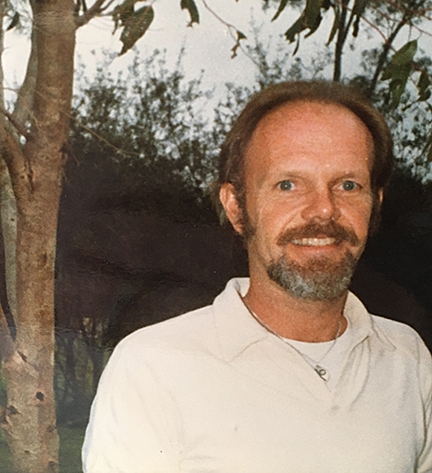
And as Norman Gary, UC Davis emeritus professor of entomology, commented earlier this year: “Robbin is recognized internationally for his expertise and research on bees, especially non-Apis species, known as wild bees. I doubt that there is anyone else in the world who can compete with his expertise in the systematics of the 20,000 species of bees on this earth. He has the perfect balance of research of field research on the biology and behavior as well as laboratory research on the taxonomy of bees.” He was the go-to person to identify a bee by species.
Yes, he was.
Born Aug. 26, 1933 in Benton Harbor, Mich., Robbin Thorp received his bachelor of science degree in zoology (1955) and his master's degree in zoology (1957) from the University of Michigan, Ann Arbor. Then it was off to UC Berkeley for his doctorate in entomology, awarded in 1964, the same year he joined the UC Davis entomology faculty. He taught courses from 1970 to 2006 on insect classification, general entomology, natural history of insects, field entomology, California insect diversity, and pollination ecology.
In his retirement, Robbin co-authored two books Bumble Bees of North America: An Identification Guide (Princeton University, 2014) and California Bees and Blooms: A Guide for Gardeners and Naturalists (Heyday, 2014). Locally, he was active in research projects and open houses at the Bohart Museum of Entomology and the Häagen-Dazs Honey Bee Haven. In his research, he monitored bees in the Häagen-Dazs Honey Bee Haven, a half-acre bee garden on Bee Biology Road operated by the UC Davis Department of Entomology and Nematology. He established a baseline in 2008 and detected more than 80 species of bees.
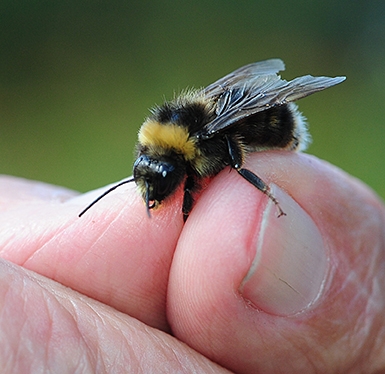
On a personal note: I first met Robbin in 2005. He maintained an office in the Harry H. Laidlaw Jr. Honey Bee Research Facility on Bee Biology Road. Although he was “officially retired,” he worked at least 40 hours a week or more--yes, every week--from the time I met him in 2005 through 2018. He'd park his white pickup truck in front of the Laidlaw facility and head eagerly to his office. The bumble bee conservationist decorated his door and office with bumble bee images and posters. He greeted everyone as his friend. After his wife, Joyce, died in December 2018, he shortened his "office hours" at the Laidlaw, but he was always available by computer or phone.
Robbin would identify native bees for everyone—from scientists to students to colleagues to journalists and, frankly, anyone with an interest in bees. And he was delighted to do it. “I enjoy it,” he once told me. And for the same reason, he'd give presentations about native bees throughout much of California and beyond. Often he'd bring along bee specimens and--if one were available--a live male Valley carpenter bee, Xylocopa varipuncta. He called this fuzzy, green-eyed blond "The Teddy Bear Bee" and urged folks to look AND touch. "Boy bees can't sting," he assured them.
An authority on Franklin's bumble bee (Bombus franklini), Robbin began monitoring the franklini population in 1998 in its narrow distribution range of southern Oregon and northern California. He last saw it in 2006 and was instrumental in placing it on the Red List of Threatened Species of the International Union for Conservation of Nature and Natural Resources (IUCN). Folks took notice of his scientific and public awareness efforts. In August of 2016, a documentary crew from CNN, headed by John Sutter, followed him to a meadow where Robbin last saw Franklin's bumble bee. Sutter wrote about Robbin, then 82, in a piece titled "The Old Man and the Bee," a spinoff of Ernest Hemingway's "The Old Man and the Sea."
Next, Robbin sought to place the bumble bee and others on the Endangered Species List. Just last month Fish and Wildlife emailed us that this might occur. Meetings are underway for four petitioned species (B. occidentalis, B. crotchii, B. franklini, and B. suckleyi).
Highly honored by his peers, Robbin was named a fellow of the California Academy of Sciences, San Francisco in 1986; recipient of the Edward A. Dickson Emeriti Professorship of UC Davis in 2010; and recipient of the UC Davis Distinguished Emeritus Award in 2015. Other honors included: member of the UC Davis Bee Team that won PBESA's Team Award in 2013. In addition, he was a past president (2010-2011) of the Davis Botanical Society, and former chair (1992-2011) of the Advisory Committee for the Jepson Prairie Reserve, UC Davis/Natural Reserve System.
In an email today to colleagues, UC Davis doctoral alumnus Leslie Saul-Gershenz, associate director of research, Wild Energy Initiative, John Muir Institute of the Environment, praised his "kindness, his support and his tremendous depth of knowledge. We will all miss the privilege of his friendship and joy of his buoyant personality."
Indeed, we will all miss Dr. Robbin Thorp, scientist extraordinaire, an absolute genius about “everything bees.” But he was much more than that. He was kind, gracious and caring. He was curious, knowledgeable and inspirational. He was the best of the best.
Toward the end of his life, his family read him accolades from his colleagues, researchers, alumni, students and citizenry, and he acknowledged each and every one, smiling. Did he know how much he was loved and appreciated? He did.
Attached Images:
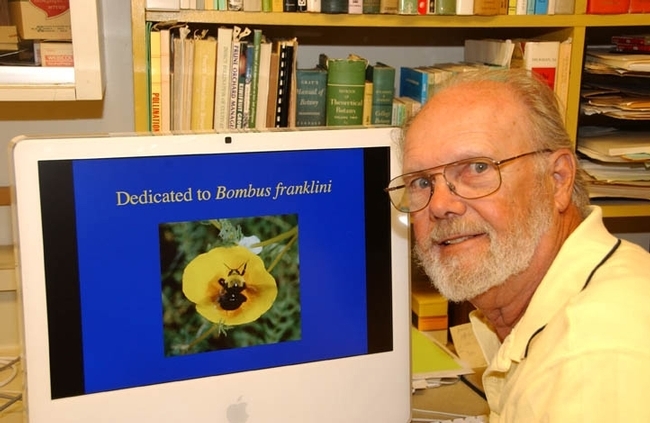
Robbin Thorp, distinguished emeritus professor of entomology, with Franklin's bumble bee, a bee he had been monitoring since 1998. (Photo by Kathy Keatley Garvey)
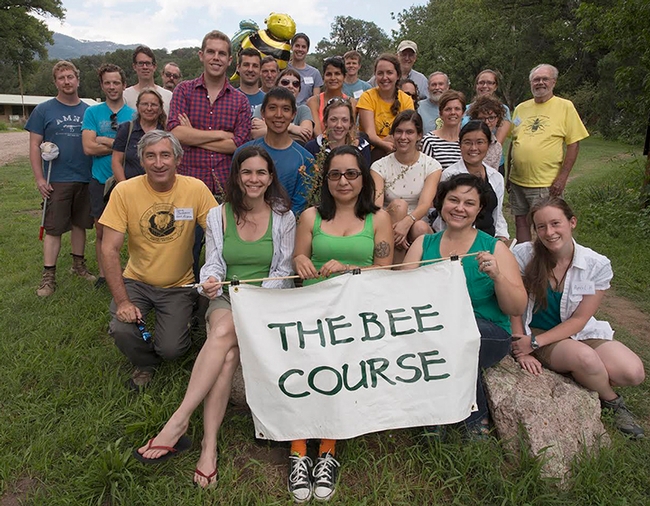
Co-instructor Robbin Thorp (far right, yellow shirt) at a recent Bee Course, sponsored by the American Museum of Natural History.
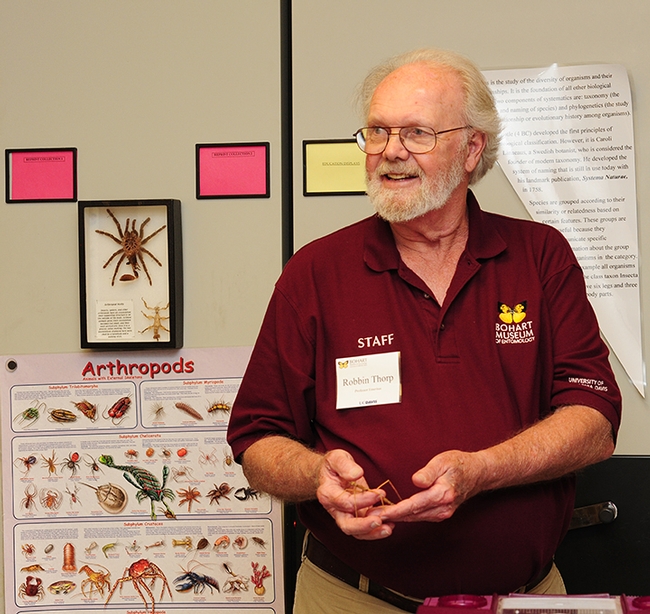
Robbin Thorp was a frequent docent at the Bohart Museum of Entomology where he also did research. This image was taken April 20, 2013. (Photo by Kathy Keatley Garvey)
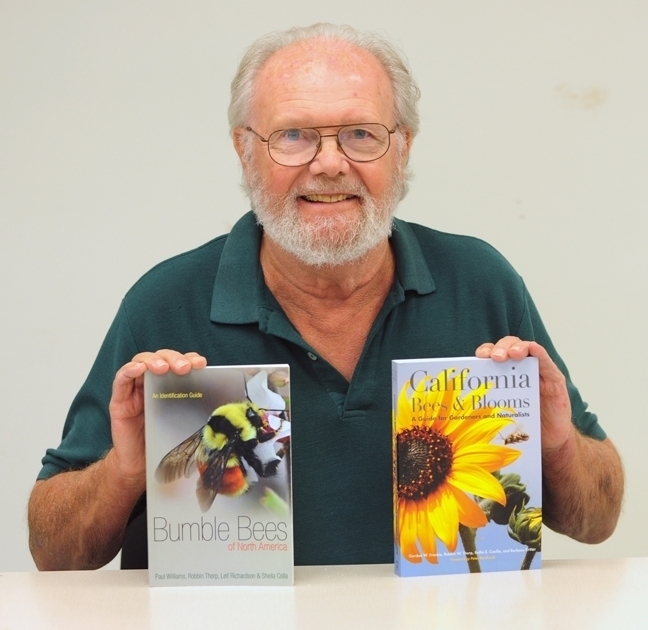
Global bee authority Robbin Thorp with two of the books he co-authored in 2014. (Photo by Kathy Keatley Garvey)
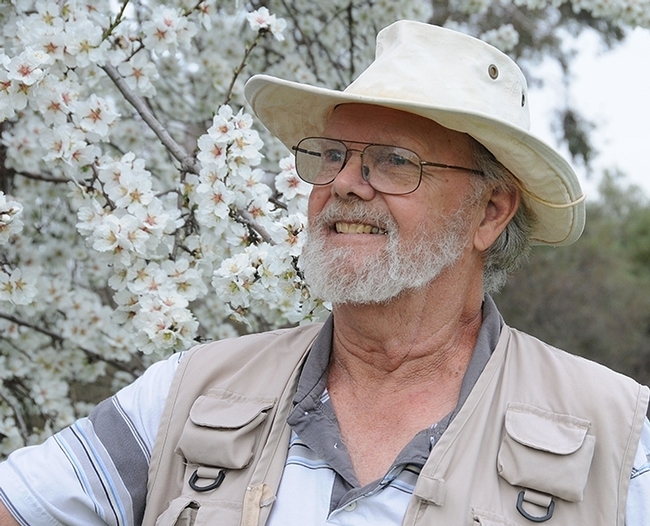
Robbin Thorp, a familiar figure in the spring, wearing his vest and trademark hat, and standing in front of a blossoming almond tree on Bee Biology Road, UC Davis. (Photo by Kathy Keatley Garvey)
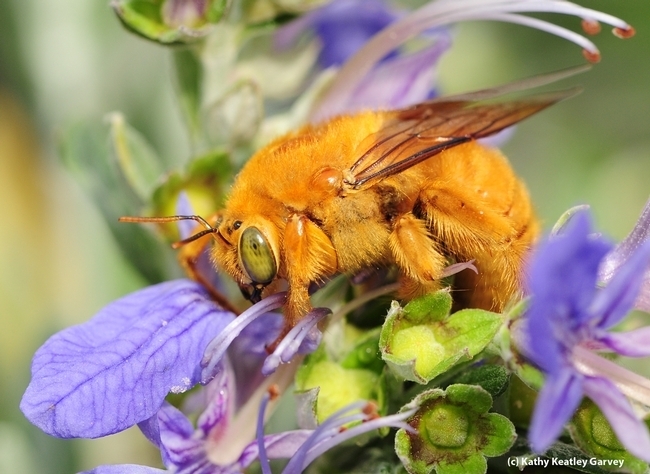
This is the male Valley carpenter bee, Xylocopa varipuncta, a species that Robbin Thorp showed often at the Bohart Museum of Entomology and at other presentations. (Photo by Kathy Keatley Garvey)